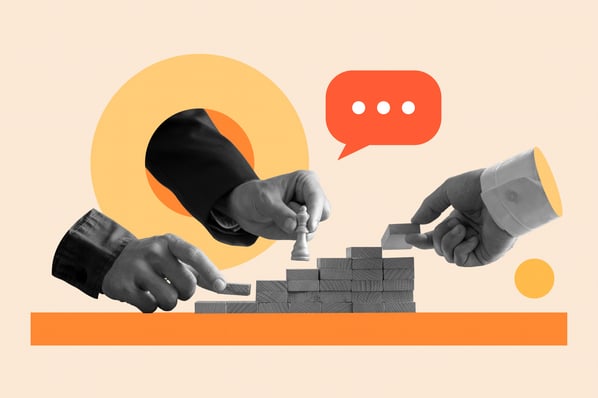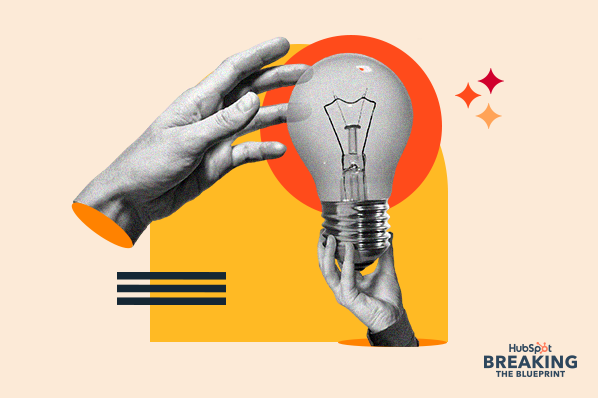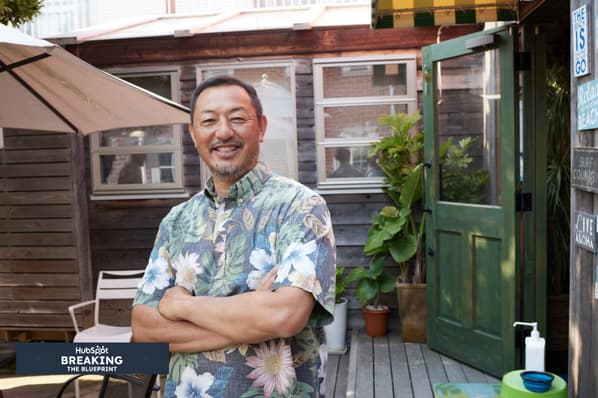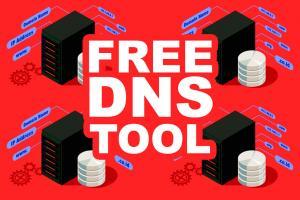Entrepreneurship
AI and startups? It just makes sense. Between the prophecy of single-person billion-dollar companies, and the pinch felt by founders as VCs tighten wallets, startups are counting on AI for a winning go-to-market strategy. It’s a smart bet, too. In HubSpot’s survey of over 1,000 startup founders, 86% said AI has had a positive impact on their GTM strategy. Those with the highest growth and most funding are more likely to attribute their growth to AI. Here are some more interesting tidbits from the meaty report: 1. AI Jobs Are Hot The report shows that 71% of startup founders already have a designated person or team that specializes in using AI in their GTM strategy, and 66% plan to hire more AI specialists in the next year. If you can’t beat it, join it. Source: Google Trends, six-month rolling average But the cost of hiring these folks is a top challenge for
It’s that time of the year… We asked a few badass colleagues and expert Trendsters what they think will be huge in 2024. Here’s what they said: 1. Niche Sports Sara Friedman, Senior Writer of The Hustle Pickleball has grown into a national craze, with courts and other related businesses popping up everywhere. In 2024, more niche sports will follow. Source: Google Trends, six-month rolling average Games like badminton, racquetball, croquet, and spikeball will see increased popularity through activity bars, facilities, and clubs. These sports will be used to fill vacant shopping malls and offices that are too difficult to flip into residential space. Badminton, where players use racquets to hit a shuttlecock across a net, might be the next big hit among Gen Z and Millennials, per Pinterest. 2. The Menopause Market Arlene Battishill, E-commerce maverick, Shark Tank trailblazer The market is finally recognizing women ages 50 and older as
Welcome to Breaking the Blueprint — a blog series that dives into the unique business challenges and opportunities of underrepresented business owners and entrepreneurs. Learn how they’ve grown or scaled their businesses, explored entrepreneurial ventures within their companies, or created side hustles, and how their stories can inspire and inform your own success. It’s no secret that Native entrepreneurs face an uphill battle when starting up their businesses. Indigenous businesses have hurdles at nearly every step of the process, whether it’s a lack of access to credit, trouble getting technical assistance or training, or a cultural barrier between investor expectations and business owner goals. Yet some business owners persist anyway, climbing over whatever obstacles are ahead to succeed in their respective fields. Native entrepreneurs have moved into a multitude of industries with profitable, impactful businesses amid surges in federal and tribal support, and Indigenous people are seeing themselves represented in
Small businesses are the lifeblood of any economy. Mom-and-pop restaurants, corner stores, family-owned shops, boutique tech firms, and other ventures drive economic growth, foster innovation, and generate employment opportunities. These businesses are the beating heart of the community. They provide essential services and goods, adding a unique flavor to local markets. 2023 continues to illustrate the importance of small businesses as they navigate through challenges and seize new opportunities. In this article, we delve into the nitty-gritty of small business statistics for 2023 and provide insights into their triumphs, tribulations, and trends. General Small Business Statistics Small Business Owner Statistics Industry-Wise Small Business Statistics Financial Small Business Statistics Jobs in Small Businesses Statistics Small Business Marketing Statistics Small Business Technology Statistics Small Business Challenges Statistics General Small Business Statistics Most businesses are small — 99.9% of American businesses. (SBA, 2023) Small businesses pay 39.4% of the private sector payroll. (SBA
Welcome to Breaking the Blueprint — a blog series that dives into the unique business challenges and opportunities of underrepresented business owners and entrepreneurs. Learn how they’ve grown or scaled their businesses, explored entrepreneurial ventures within their companies, or created side hustles, and how their stories can inspire and inform your own success. Native entrepreneurship often occupies two worlds. Aspiring Indigenous business owners navigate historic barriers to traditional financing and growth — while building culturally informed, sustainable ventures. This challenging climate hasn’t stopped these entrepreneurs from entering nearly every industry imaginable to make an Indigenous imprint on the world while supporting themselves and their communities. Some Native business owners build on cultural touchstones like tribal art and stories to launch design studios and art shops. Others address long-time systemic hurdles to credit by stepping into the financial sector, bringing an Indigenous perspective to the issue that often proves crucial in addressing it.
Welcome to Breaking the Blueprint — a blog series that dives into the unique business challenges and opportunities of underrepresented business owners and entrepreneurs. Learn how they’ve grown or scaled their businesses, explored entrepreneurial ventures within their companies, or created side hustles, and how their stories can inspire and inform your own success. Asian American Pacific Islander (AAPI) communities, originating from around 20 diverse countries, have a long history of exclusion, strict immigration laws, and discrimination. When immigrants, like my grandfather, from East and Southeast Asia made it into America in the 19th and 20th centuries, most of the available jobs were backbreaking labor. When access to employment was slim, or wages were low, many newcomers relied on building small businesses to provide for their families. Those businesses have become deeply rooted in the day-to-day life of American society–restaurants, nail salons, doughnut shops, dry cleaners, spas, markets, and many others. Still
Welcome to Breaking the Blueprint — a blog series that dives into the unique business challenges and opportunities of underrepresented business owners and entrepreneurs. Learn how they’ve grown or scaled their businesses, explored entrepreneurial ventures within their companies, or created side hustles, and how their stories can inspire and inform your own success. Aspiring Native entrepreneurs face many challenges in growing small businesses. Complex land lease laws, strained infrastructure, and a chronic lack of credit access all inhibit Indigenous success. However, thanks to growing federal, organizational, and tribal support, potential business owners have more resources available than ever. Navigating new financial mechanisms, tribal incubators, and government programs can still present a challenge. By appraising available resources, and when to leverage them, Native entrepreneurs gain a great head start in launching new ventures. Starting on the right foot, with the right tools, can make all the difference – especially when climbing
Welcome to Breaking the Blueprint — a blog series that dives into the unique business challenges and opportunities of underrepresented business owners and entrepreneurs. Learn how they’ve grown or scaled their businesses, explored entrepreneurial ventures within their companies, or created side hustles, and how their stories can inspire and inform your own success. Networking is connecting with other business professionals, building relationships within and outside your field, and diving into your story to establish the “why” behind your work. Effective networking highlights your expertise and that of your peers so that you can find a middle ground of opportunity, collaboration, and collective problem-solving. Because of the power of networking, professionals are often told to focus on building their networks. That is easier said than done, though, because people from marginalized communities — specifically individuals who are Lesbian, Gay, Bisexual, Transgender, and Queer (LGBTQ+) — have historically been underrepresented and left out of













